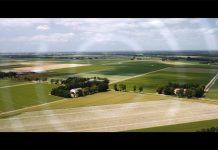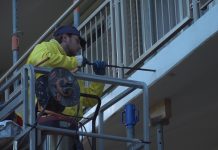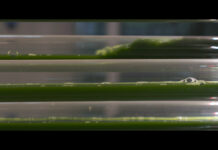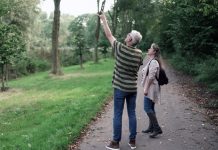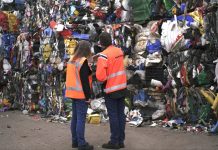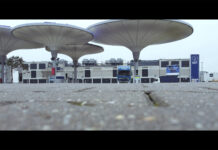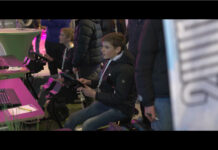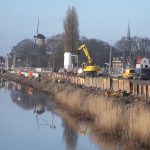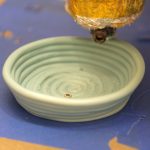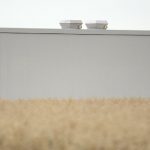Verlies van biodiversiteit in de stad
Biodiversiteit of te wel de verscheidenheid van leven, wordt gestaag minder. Steeds vaker worden we hiervoor gewaarschuwd. Wat is nu precies dat verlies van biodiversiteit en waar gebeurt dat dan? Op zoek naar antwoorden gingen we op pad met Ton Eggenhuizen, Stadsecoloog in Almere. Want ook in de stad is er verlies van biodiversiteit.
Visie Ecologie
De gemeenteraad van Almere heeft de ‘Visie Ecologie‘ aangenomen. Volgens Ton is het doel hiervan, ‘om bekendheid te geven aan de rijke natuur in de stad, in de hoop dat iedereen daar ook een bijdrage aan levert. Bij de ‘Visie Ecologie’ wordt uitgegaan van de drie V’s de VVV, de V van verbinden, de V van verbinden en de V van verbinden. Waarbij we natuurgebieden onderling willen verbinden, maar ook verbinden van mensen met natuur. Dat is misschien nog wel het allerbelangrijkste. Verbindt de mens met natuur en verbindt ook de van nature aanwezige context met je planten. Dat laatste is wat lastiger, maar daarin zeggen we eigenlijk, we willen niet te veel natuur maken. We willen de kansen die de bodem, het klimaat en het watersysteem bieden benutten om een ecologisch systeem te maken. Dus niet te veel maken, maar gewoon de kansen benutten die het systeem ons geeft.’
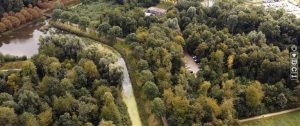
Natuursystemen verbinden
Ton vertelt over het belang om natuurgebieden met elkaar te verbinden. Hiermee doelt hij niet alleen op parken en groenstroken van de gemeente, maar ook op tuinen van de inwoners. ‘Als jij je tuin bijvoorbeeld egel vriendelijk maakt en jouw buren hebben een harde schutting met zo’n betonrand aan de onderkant, dan kan die egel nergens naar toe. Dan kan jij wel een prachtig mooie egelvriendelijke tuin maken, maar die egel heeft veel meer tuinen nodig, die kan niet leven op één tuin.’
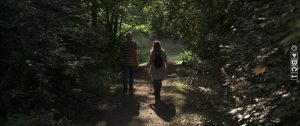
Maken meer planten en bomen verschil?
Als we thuis of bij het bedrijf meer planten in de tuin zetten en de gemeente plant meer bomen zijn we er dan of is er meer nodig? Ton vindt dit belangrijke stappen. Wel geeft hij aan dat het ook dan het beste is om dat op mekaar af te stemmen.
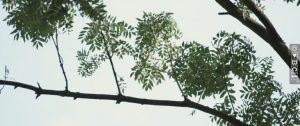
Zijn verduurzaming en biodiversiteitsbehoud duur?
Nee, zegt Ton, dat heeft vooral ook met je perspectief van tijd te maken. Het kan misschien op de korte termijn duur zijn maar op de lange termijn is het is juist heel erg kostenefficiënt, levert het geld op. Alleen is het vaak zo dat we met onze budgetten in een hele korte tijdframe zitten. Neem bijvoorbeeld groen en buiten spelen, kinderen die buiten spelen zijn gezonder. Minder last van obesitas. Obesitas levert later, als die kinderen 50 jaar oud zijn, hartproblemen op. Maar ja dat is over 50 jaar, terwijl we nu met budgetten zitten die vaak maar voor één of vier of vijf jaar zijn. Terwijl die vermeden zorgkosten, ja dat gaat over een veel langere periode. Dus we moeten ook leren kijken over veel langere periodes, daar moeten we echt nog wel een hele verandering in bewerkstelligen.”
Wil jij weten wat Ton nog meer hierover te vertellen heeft? Kijk dan naar de video.
Zie ook: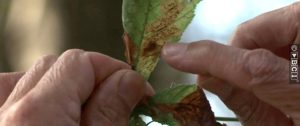
Natuurlandbouw beter voor biodiversiteit
Circulariteit noodzaak voor behoud winstgevendheid


